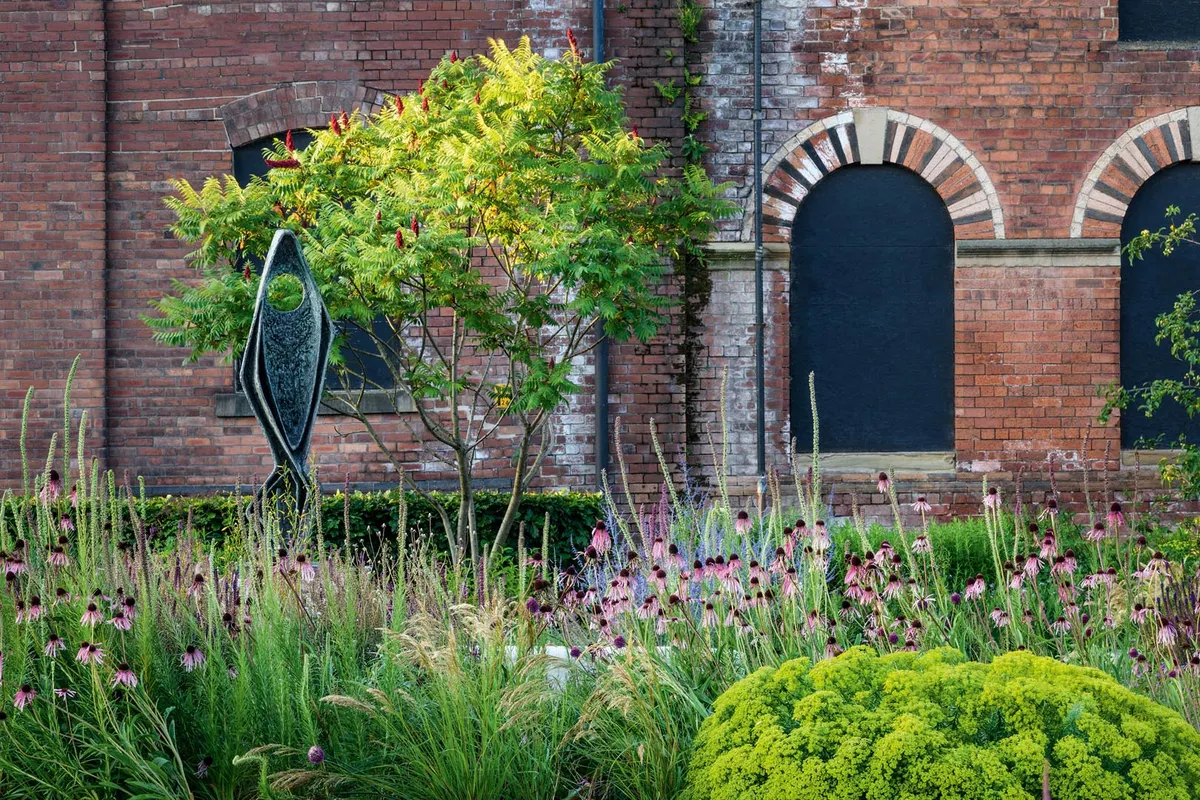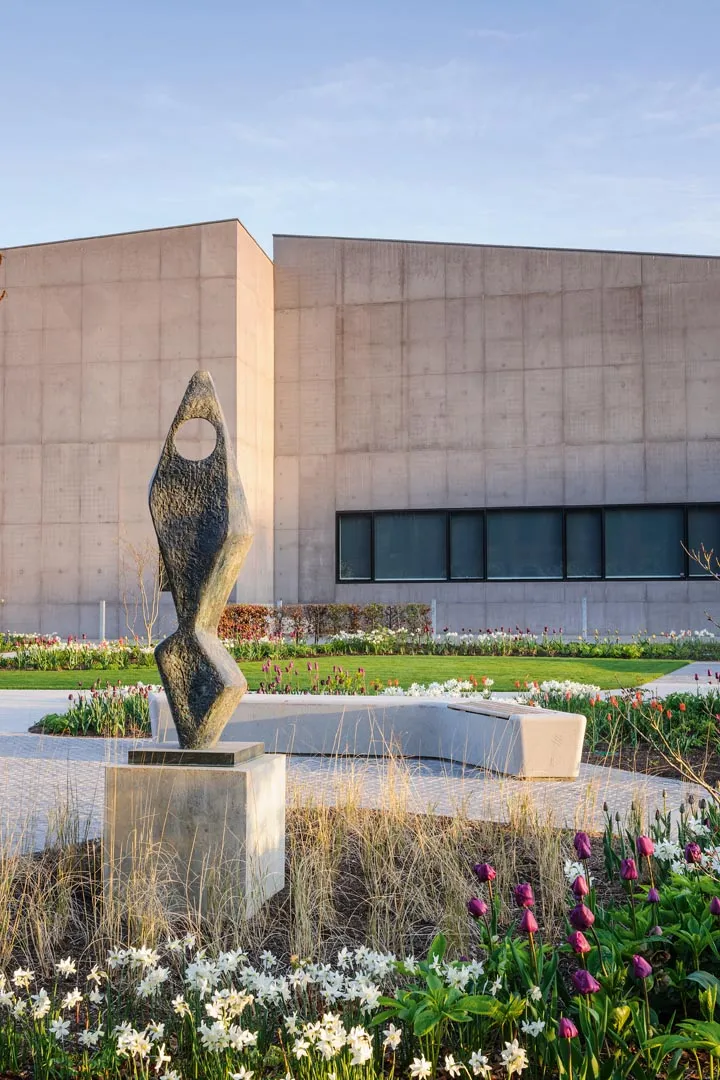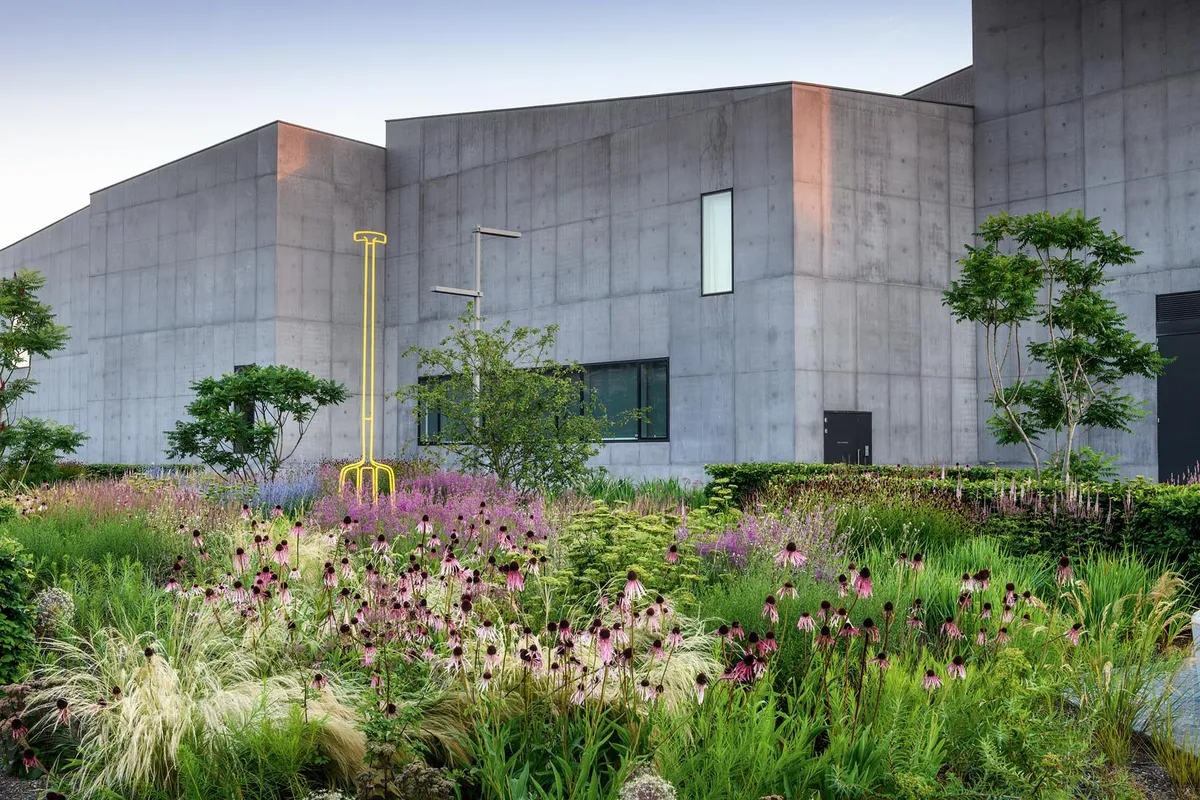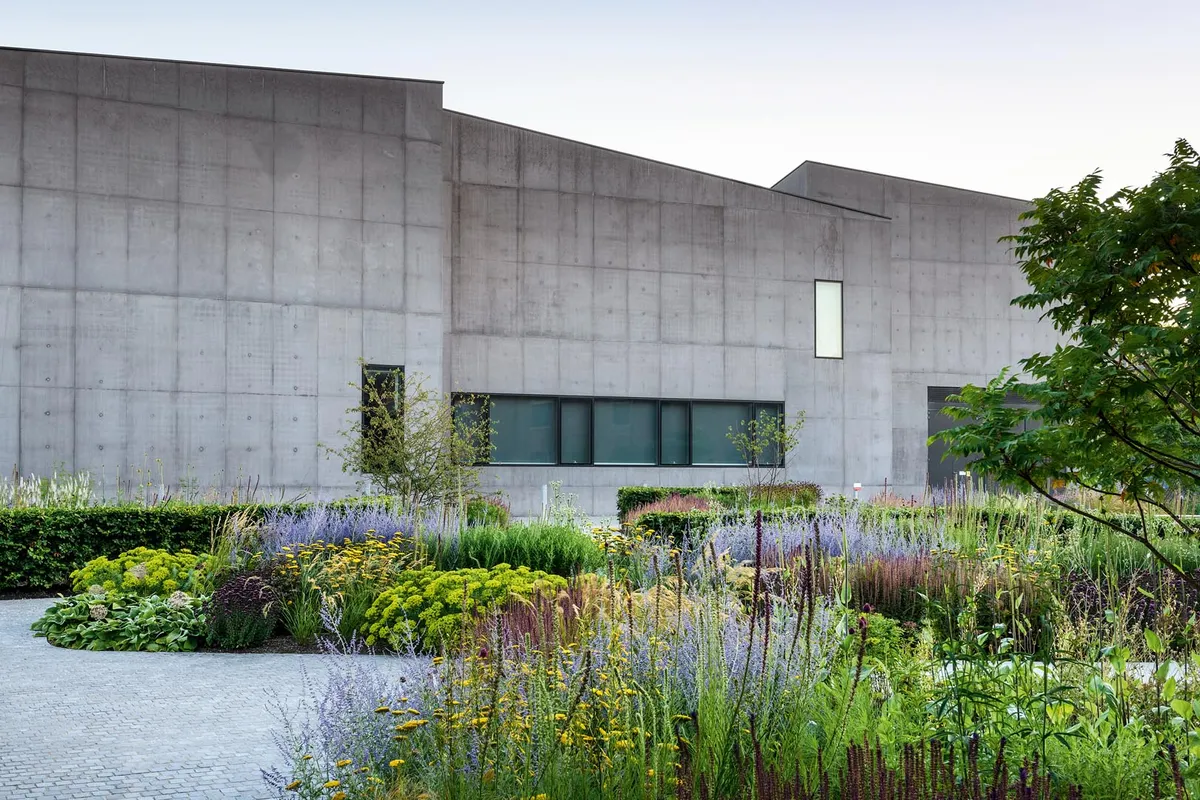There are many elements that make up a good public garden and the one at The Hepworth Wakefield in West Yorkshire has bagged them all. This award-winning gallery has had the foresight and ambition to create a truly unique garden. As its wonderfully titled cultural gardener, Katy Merrington, explains: “It’s very rare to make a garden of such quality, and then to make it free and open 24 hours a day.”
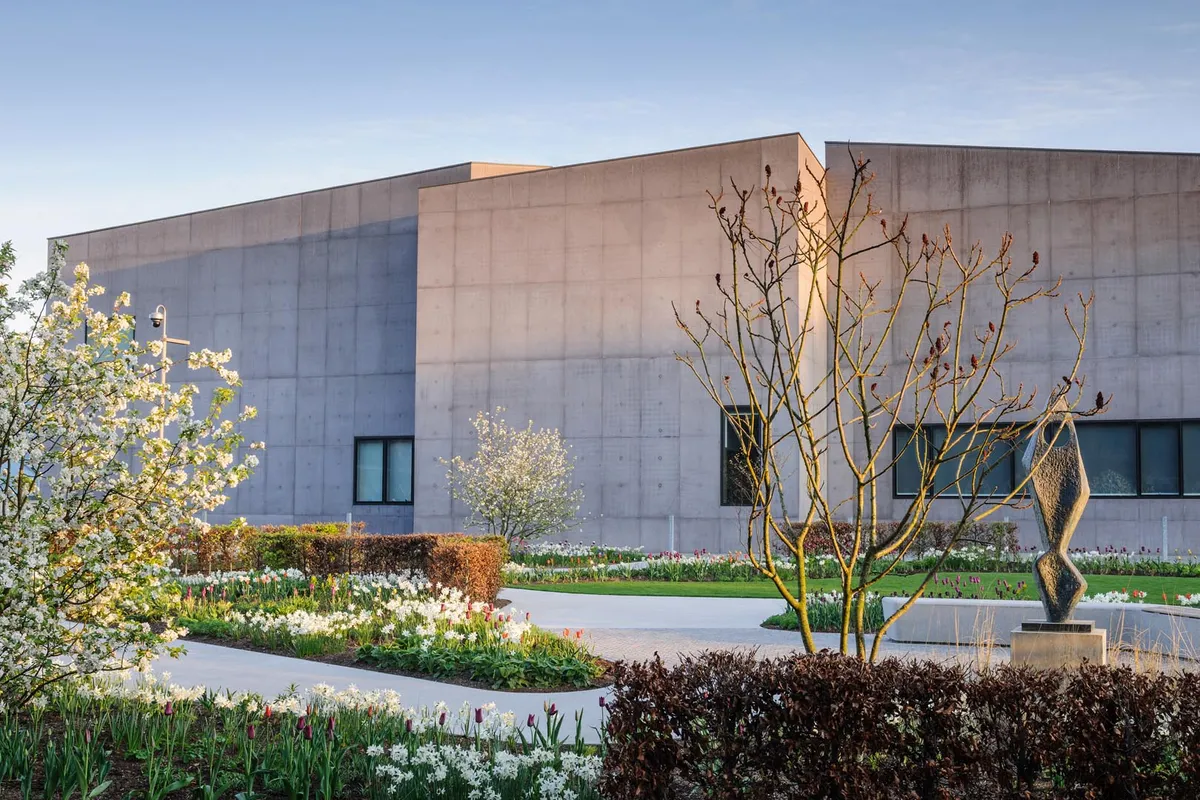
IN BRIEF
What: Public garden surrounding The Hepworth Wakefield
Where: Gallery Walk, Wakefield, West Yorkshire WF1 5AW.
Open: Garden open daily.
Where: West Yorkshire.
Size: Just under one acre.
Soil: Amended urban soils.
Climate: Temperate with high winds off the neighbouring River Calder and relatively low rain fall.
The garden sits behind the gallery, which is a series of trapezoidal concrete forms designed by David Chipperfield Architects, and the Victorian mills from which the town once made its fortune. “It’s a uniquely curious setting,” explains Katy. “The context around the gallery is an industrial estate, six lanes of roaring traffic and a raging river.” It needed a thoughtful approach that could create a sanctuary from all of this noise – and who better than a designer at the top of his game, Tom Stuart-Smith.
Hepworth Wakefield garden: video tour
At the road end, Tom decided to put a 4.4m-tall wall to muffle the hum of traffic. “I felt that we had to create a precinct, not in a stuffy collegiate way, but to make a hallowed ground of the space. There’s so much convergency in this garden with the river and the roads, and it needed a sense or curtilage,” he explains.
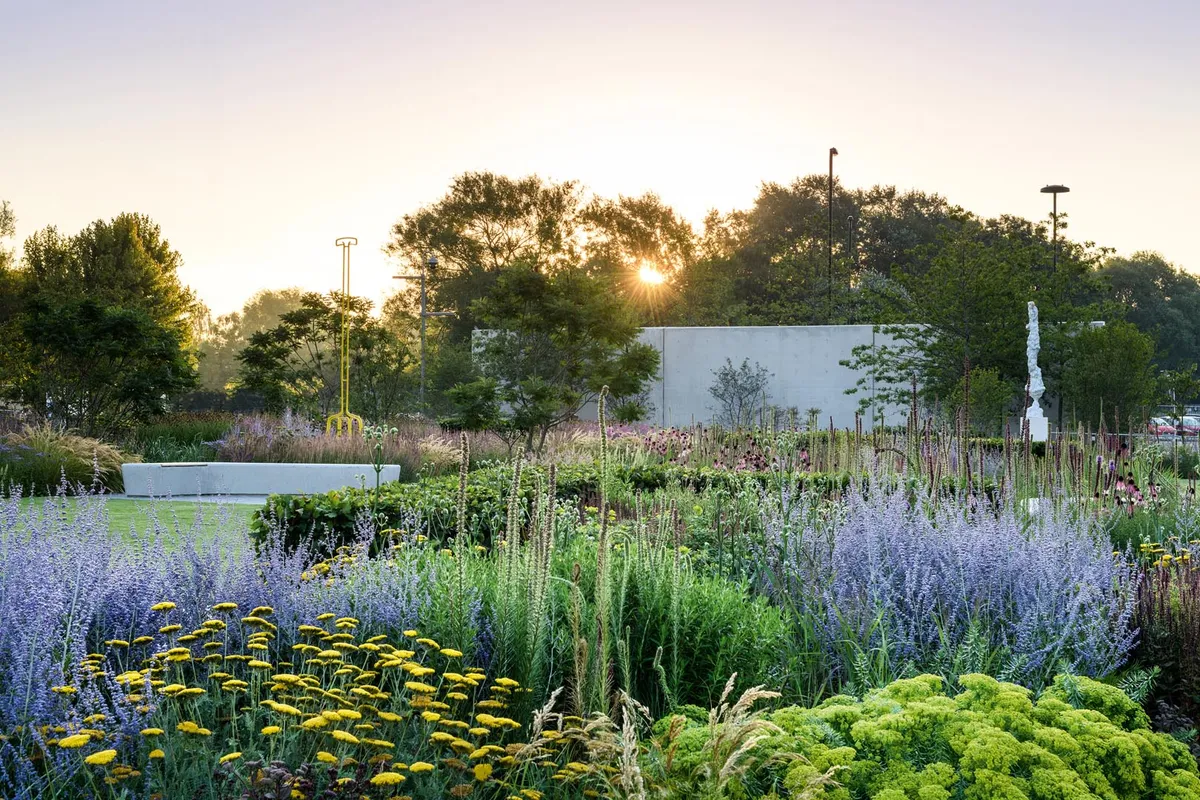
The planting
This wall creates a sense of protection that is further enhanced by tall pin oaks (Quercus palustris) planted around it to create a secluded woodland feel with planting easing out to more open areas. Pin oaks are used again, at the opposite end as if to bookend the garden and between these are fairly open meadows of colourful perennials with smaller trees.
“I just thought colour is going to be so important in this garden. I wanted a real succession of it from April to November,” says Tom. “There needs to be always something happening for locals, perhaps more than for visitors. It’s quite consciously not a minimalist palette that you might expect to find outside of a gallery, but a civic space,” he adds.
For Tom, the importance of detail and variety in the planting is a moral imperative. “We know from research that attachment [to nature and place] is much stronger with variety. Increasingly, I can’t stand bland minimalism,” he says.
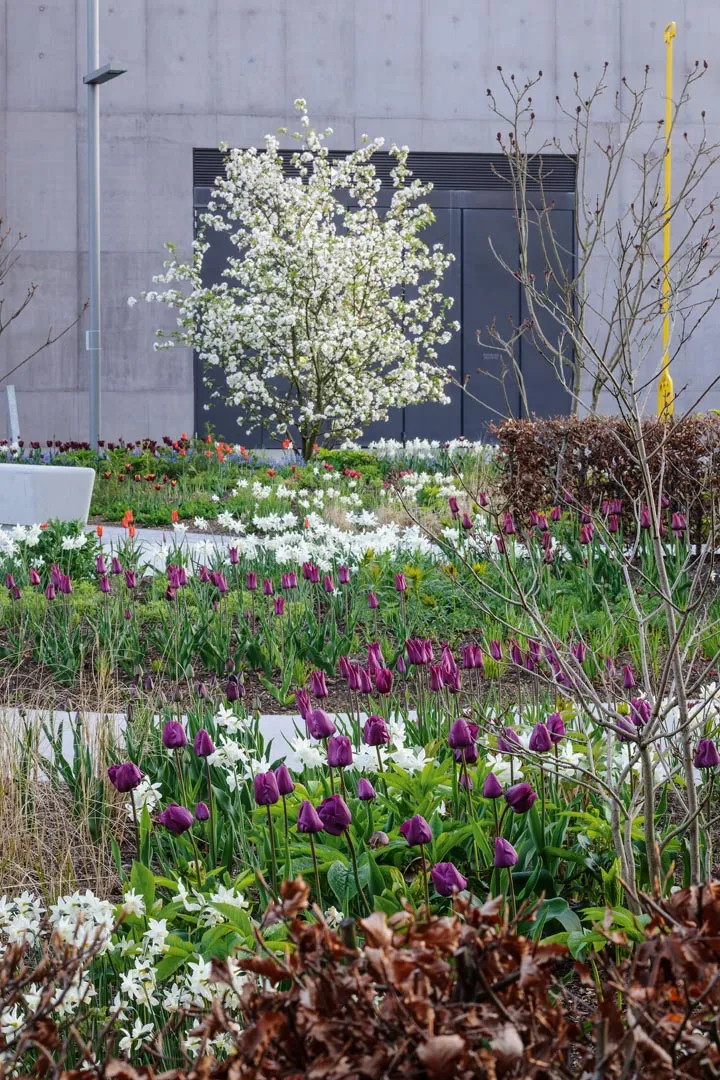
The concept
This, in part, is why Katy has been charged with planting 60,000 bulbs, including swathes of tulips – in honour of the Wakefield and North of England Tulip Society, one of England’s oldest florist societies – and from spring onwards the garden endlessly shifts.
What starts off as a cascade of bulbs with white daffodils and tulips, becomes blossom on the trees, such as Malus ‘Evereste’, and then moves on to perennials, which start off bright and zesty with golden achilleas and the lime-green zing of euphorbias, moving into more painterly phases with pink shifts, such as the Echinacea pallida with the almost neon lift of Liatris pycnostachya.
The garden is very flat and these certainly add height. “The liatris are such a character, almost like a comedy element,” says Katy. “Children love them.” In autumn, the garden mellows to the russets and browns of asters and grasses and the fiery oranges, rust reds and bronzes of the crab apples and pin oak.
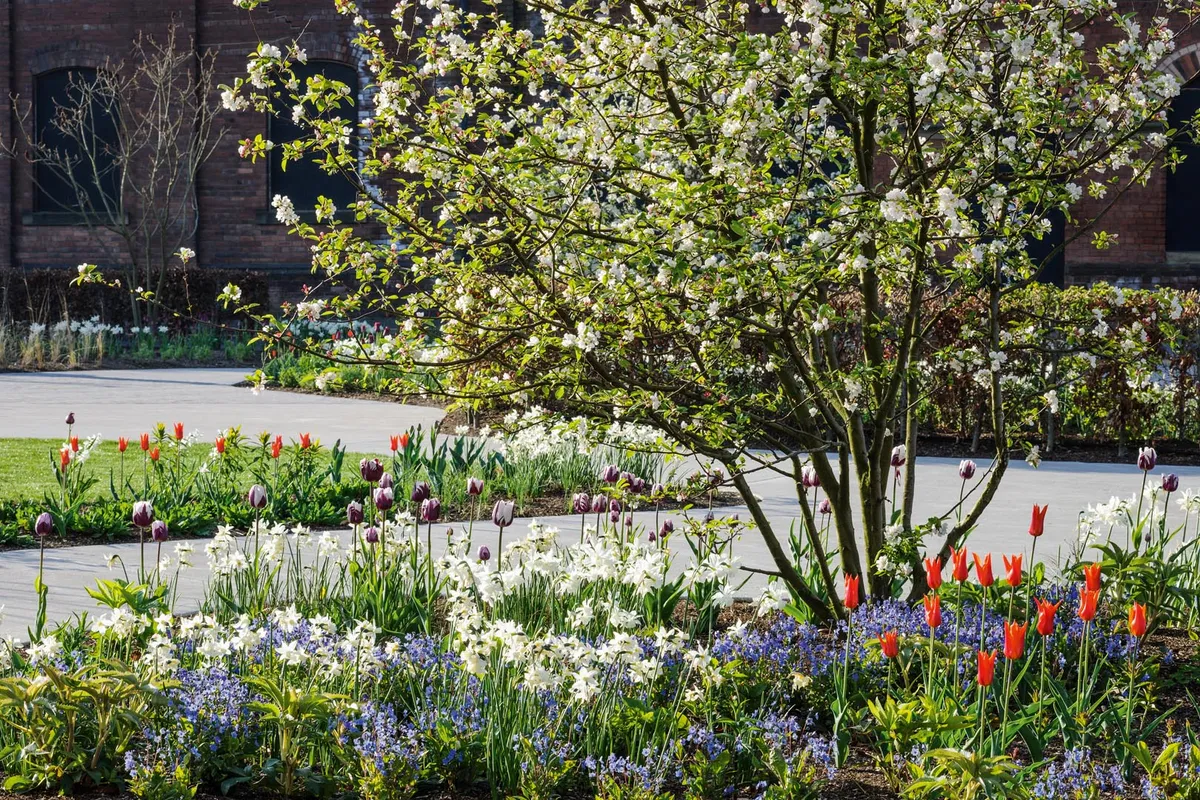
The result
“I think because the garden is linked to the gallery, they play off each other, and people come out and start to see the sculptural quality of the plants. Barbara Hepworth really believed in having her sculpture outside,” says Katy. The interplay between the light, art, concrete and planting comes together beautifully in this brave and generous garden.
Don't miss this garden on the Sky Arts documentary The Art of the Garden
